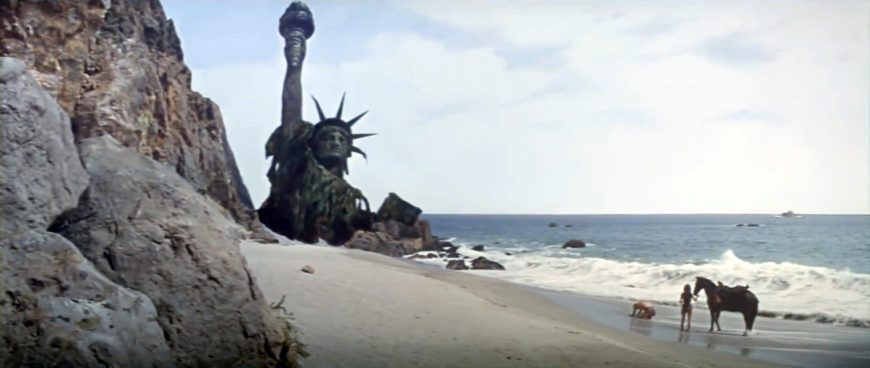
Planet of the Apes, 1968, Franklin Schaffner director, starring Charlton Heston, Roddy McDowall, and Kim Hunter (20th Century Fox)
Empty-eyed in a desolate landscape
One of the most famous endings in cinema—one of those images you recognize immediately, even if you’ve never seen the whole movie—is the last shot of the original 1968 version of “Planet of the Apes.” Charlton Heston, to his howling dismay, discovers what attentive viewers might have suspected all along. He didn’t crash into a planet in some remote corner of the galaxy, where gorillas and chimpanzees rule over humans: he’s been home the whole time, on a dystopian future earth. The proof is the sight of the Statue of Liberty, once a beacon of hope and now a ruin half-buried in the sand.
It’s a horrifying tableau, arguably more powerful than anything else in the film, which is, all in all, an over-earnest, pulpy adaptation (directed by Franklin J. Schaffner), of Pierre Boulle’s science-fiction bestseller. It doesn’t stand up very well. The allegory is problematic, the ape masks are silly, and the movie survives as a camp artifact, except for that final moment. There is something undeniably horrifying about seeing the Lady in the Harbor standing empty-eyed in a desolate landscape, a feeling of dreadful sublimity that inverts the awe that might accompany seeing her in real life, say from the deck of a tourist ferry en route to Liberty Island.
The horror is cautionary, and also titillating, in the way that science fiction thrills us by inviting us to imagine the worst. Movies and their audiences revel in spectacles of destruction, routinely treating us to the obliteration of monuments, landmarks, cities, entire planets. We can enjoy the wreckage because we know it isn’t real, while at the same time feeling a tremor of plausibility. What if it really happened?
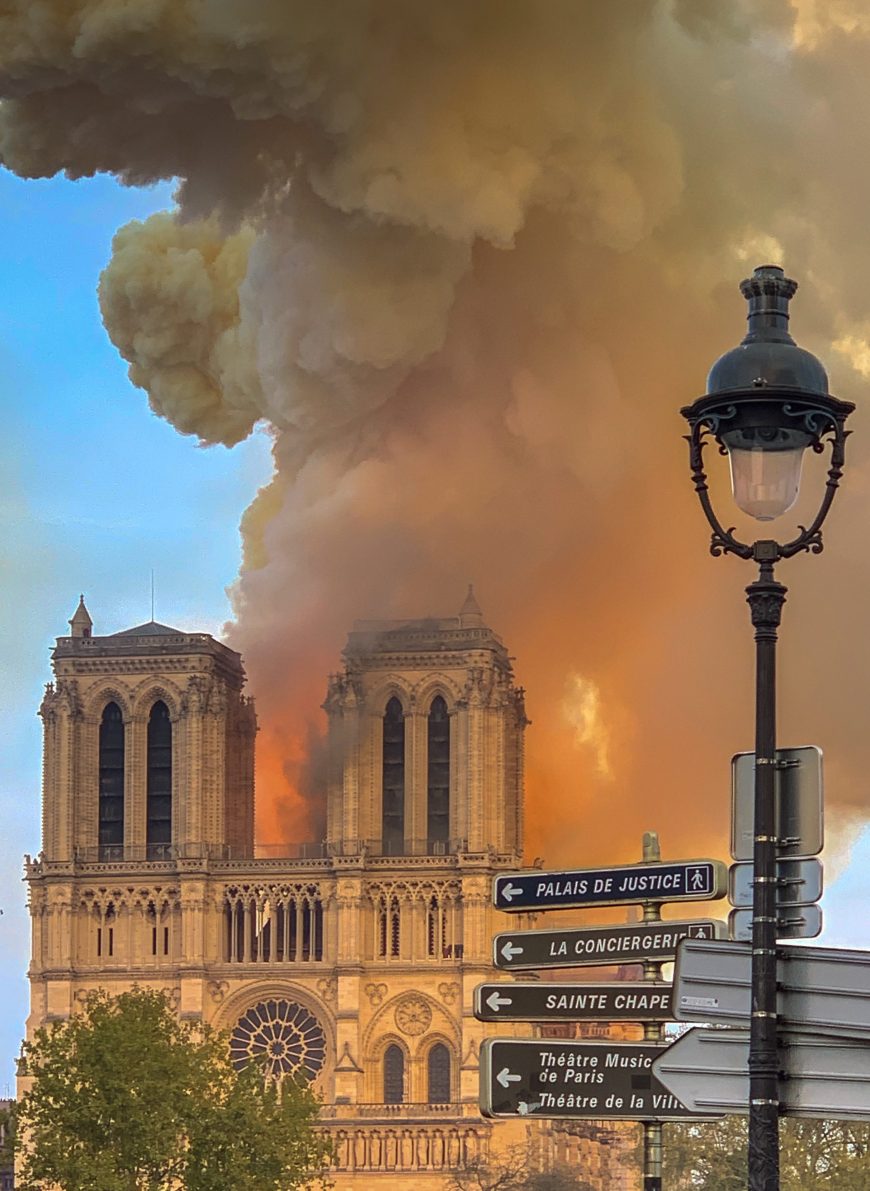
Fire at Notre Dame de Paris, April 2019 (Photo: Milliped, CC BY-SA 4.0)
But of course it does really happen. The history of modern warfare—to say nothing of older annals of sacking and pillage—is testament to the vulnerability not only of human populations, but also of everything human beings have built, including cherished monuments, museums, and architectural masterpieces. Accidents and natural disasters also claim their share of the spoils. Recently, video of flames shooting from the roofs of Notre Dame de Paris and the National Museum of Brazil in Sāo Paolo provoked a sickening sense of simultaneous incredulity and déjà vu. This is the kind of thing we’re used to seeing in movies—the result of alien invasions, asteroid collisions, zombie apocalypses or diabolical super-villain conspiracies. The movies, in other words, is where we like to think this kind of disaster belongs. They prepare us for calamity even as we like to think they inoculate us.
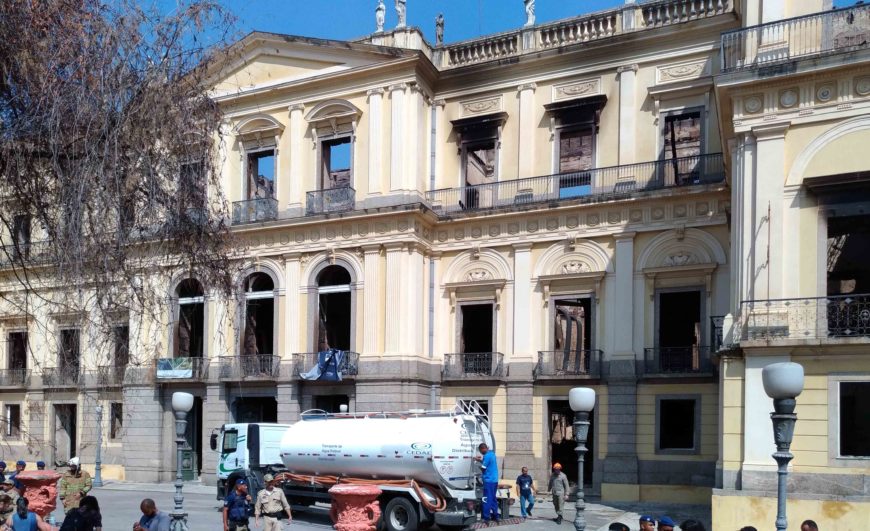
National Museum of Brazil after the fire on September 2, 2018 (photo: Lu Brito, CC BY-SA 4.0)
Emblems of vanity
Real-world landmarks are repositories of history, meaning and cultural and species identity. All of that is comprehended in the phrase “heritage site,” which idealistically assumes a global consensus that may or may not exist. (If nothing else, the shelling of the medieval Croatian city of Dubrovnik by Serb forces during the Balkan Wars of the 1990s and the obliteration of the Buddhas of Bamiyan, Afghanistan by the Taliban in 2002 suggest that the values that protect such sites are as fragile as the sites themselves). They serve as symbols of what is unquantifiably threatened by disaster. They stand for civilization in the broadest sense, as well as for the particular civilizations that produced them. Thus the Statue of Liberty in Planet of the Apes doesn’t just represent the ideal of American democracy or the Republican legacy of France, but also a wider human ambition, an impulse to leave behind outsized tokens of our presence on the planet.
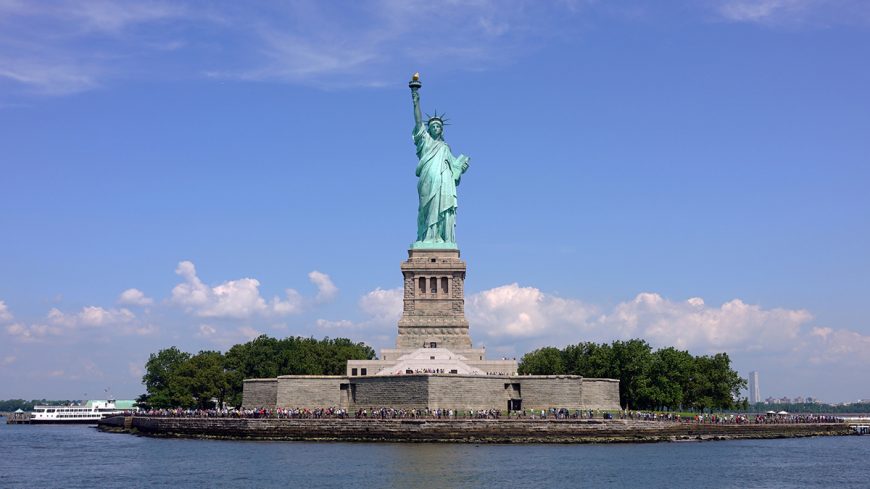
Frédéric-Auguste Bartholdi (sculptor), Gustave Eiffel (interior structure), Richard Morris Hunt (base), Statue of Liberty, begun 1875, dedicated 1886, copper exterior, 151 feet 1 inch / 46 m high (statue), New York Harbor
Mocking this ambition is also a long-standing cultural habit. The durability of these massive structures of metal or stone means that they are likely to outlast the societies that erected them, and thus to survive as emblems of vanity, futility and insignificance. What Charlton Heston says when he sees the ruined Lady Liberty is “You finally, really did it. You maniacs! You blew it up!” I understand him to be addressing not the apes, but his fellow humans, whose self-destruction paved the way for their displacement by another species. And so an embodiment of noble possibility becomes a reminder of failure and disgrace.
The rebooted, 21st-century “Planet of the Apes” franchise retells the story from a decidedly more ape-friendly perspective. A decisive battle in the revolution against human domination takes place on the Golden Gate Bridge. The structure survives the mayhem, but the sight of its span over-run by angry, rebellious primates signifies its passage from a monument of our engineering ingenuity into an omen of our obsolescence. Like the Statue of Liberty in the earlier version, the survival of the bridge is an index of our destruction. This time, what is dramatized is exactly how we did blow it all up.
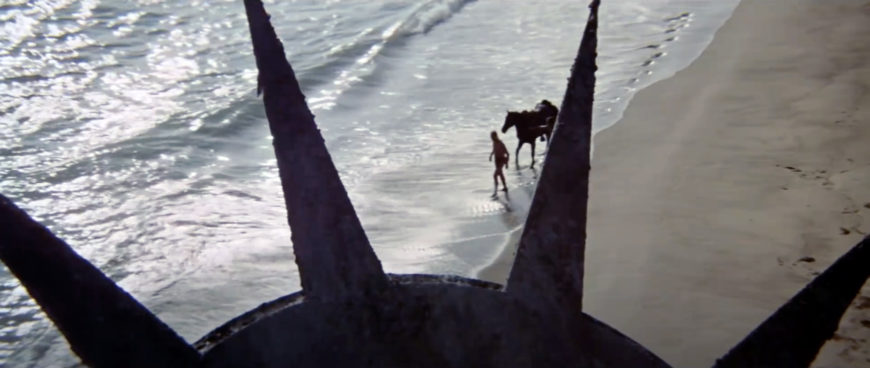
Planet of the Apes, 1968, Franklin Schaffner director, starring Charlton Heston, Roddy McDowall, and Kim Hunter (20th Century Fox)
This kind of imagery—the hollowed-out heritage site, evacuated of the human presence that had provided it with a function and a meaning—has recently become a staple of the zombie movie, arguably the most popular disaster subgenre of the 21st century so far. The final scene of “28 Weeks Later” (2007) shows a zombie bacchanal at the foot of the Eiffel Tower (in the earlier “28 Days Later,” the infected flesh-eaters had rampaged through the landmarks of London). The non-zombie survivors in “Zombieland: Double Tap” (2019)—sequel to the popular, spoofy “Zombieland” (2009)—find temporary refuge in the White House and at Graceland. Their irreverent presence in those secular pilgrimage sites is funny and horrifying at the same time. Look how easy it is for the grand achievements of American democracy and American pop culture to become derelict, reduced to museums without patrons, tombs without mourners.
Fantasies of destruction
And look how easy it is to imagine not just the emptying out of those edifices, but also their physical obliteration. Since the beginning, cinema has devoted a portion of its innovative energy to refining the machinery of fantasy, and the rise of digital effects in the past 30 years or so has put fantasies of destruction at the fingertips of hacks and visionaries alike. It now takes relatively little effort to conjure a digital city in order to lay waste to it.
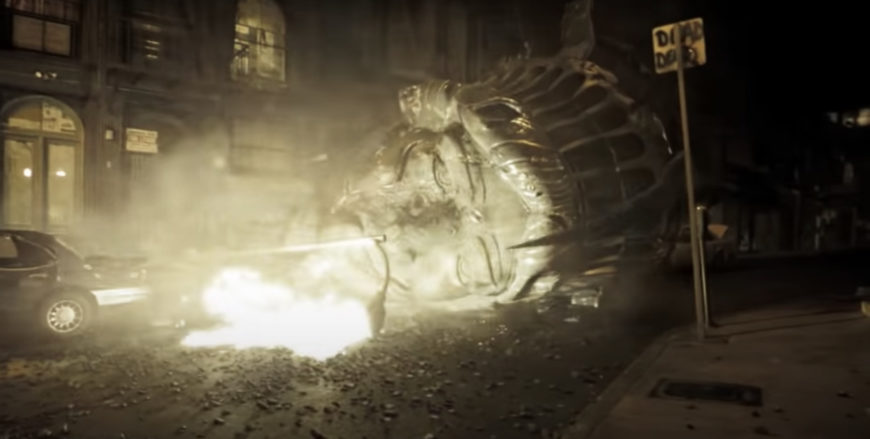
Cloverfield, 2008, Matt Reeves director, starring Mike Vogel, Jessica Lucas, and Lizzy Caplan (Paramount)
The destruction has become almost banal. The blockbusters of the 90s and early 2000s represent an orgy of destruction. The Golden Gate Bridge was destroyed in “X-Men,” the White House in “Armageddon” and again in “2012,” Big Ben in “V for Vendetta,” the Statue of Liberty in “Cloverfield.” This is a partial list, and what’s striking is how trivial so many of those movies now seem. Even in the wake of the September 11 attacks—which people at the time said “was like something out of a movie”—the appetite for falling skyscrapers and glass-shattering fireballs did not abate. On the contrary, the ability of reality to emulate movie nightmares spurred the production of more such nightmares, as if their inoculating power required an ever higher dose.
In her essay “The Imagination of Disaster,” first published in 1965, when science fiction movies were preoccupied with the prospect of nuclear annihilation, Susan Sontag wrote that “we live under continual threat of two equally fearful, but seemingly opposed, destinies: unremitting banality and inconceivable terror.” That is still true, except that now it may no longer be possible to tell which is which. And that may be partly because, when it comes to the things we have built to celebrate our passage through history, we may dread their loss even as we take them for granted. We contemplate their destruction in order to work out—and also, somehow, to avoid thinking too hard about—a deeper ambivalence about ourselves.

